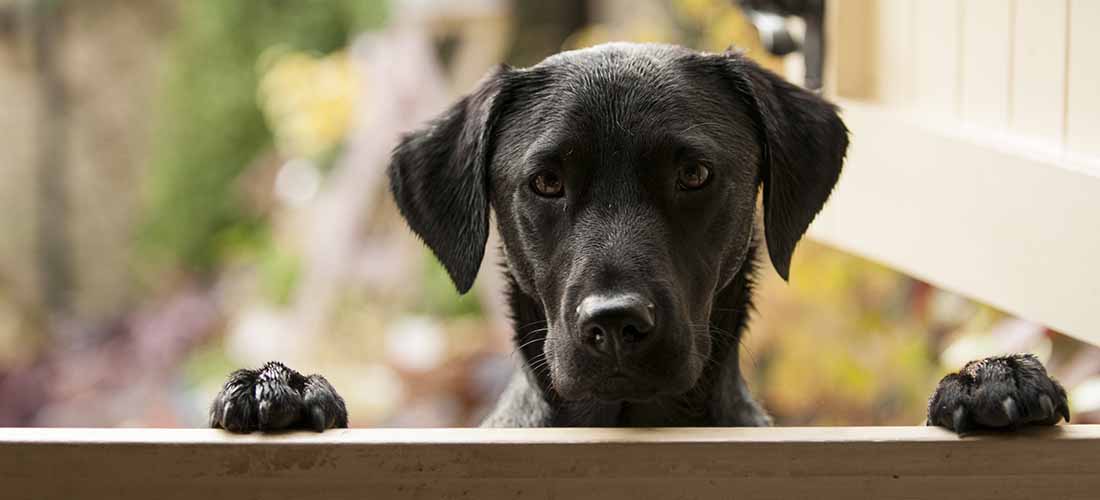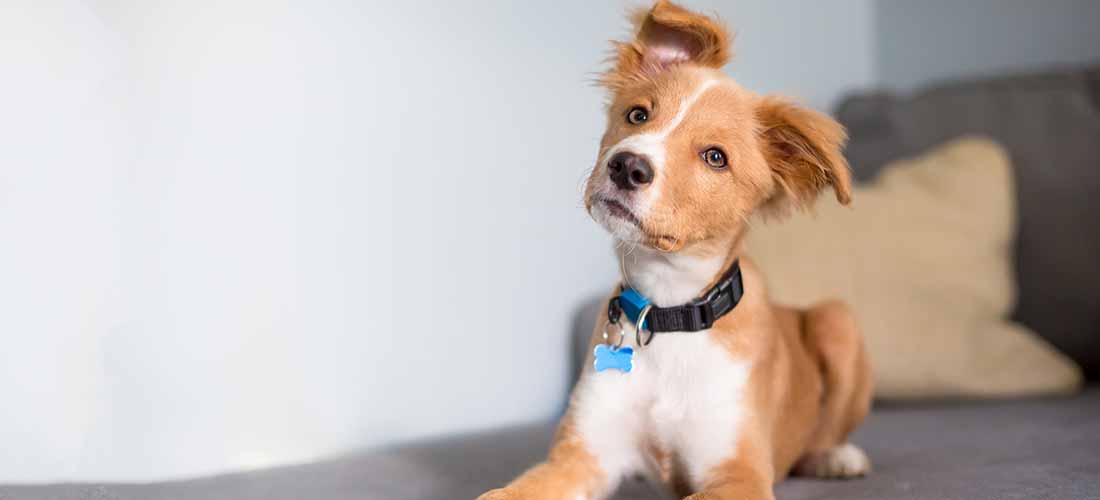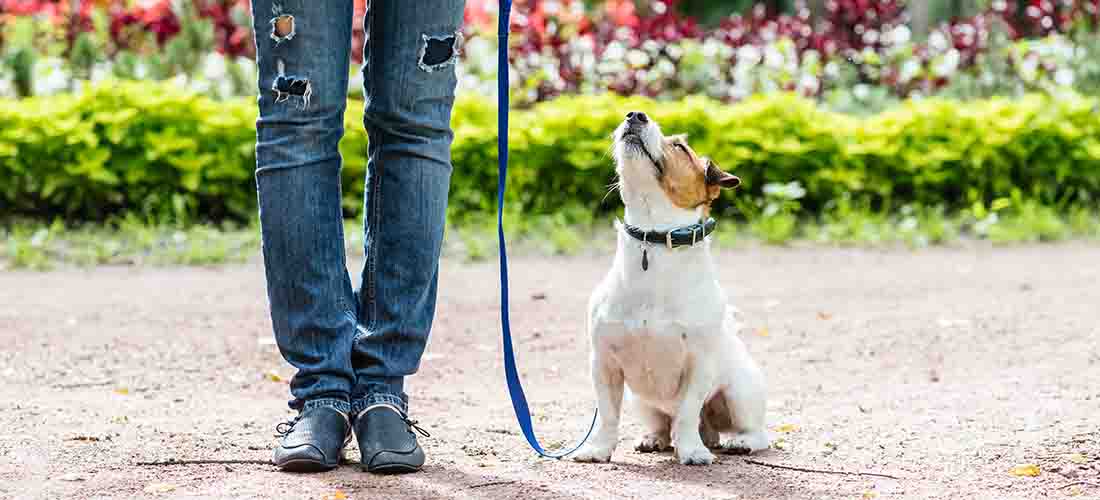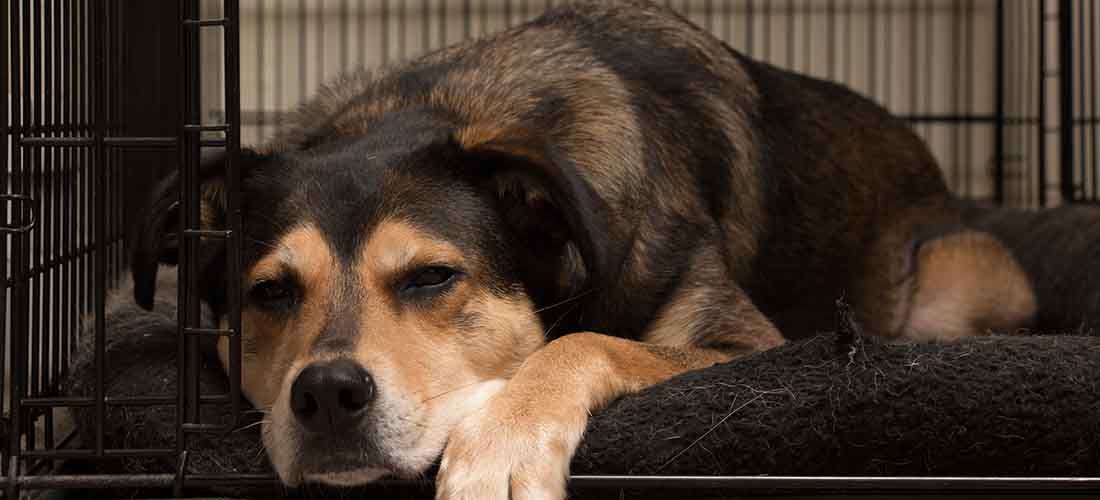Bad behaviour: dealing with unwanted behaviour in dogs
We’re a nation of pet lovers and dogs are one of the UK’s most popular pets, but sometimes our dogs do things that aren’t quite so lovable.
Research from our 2020 PAW Report shows that 75% of dog owners would like to change their dog’s behaviour. So if you’re one of them, you’re definitely not alone. Just like us, it’s easy for our dogs to pick up bad habits – and these can become a problem for owners.
Some behaviours are annoying or frustrating, for example jumping up and pulling on the lead. Problems like these may be fixed with training. However, other problems can have a big impact on you and your dog, or even be dangerous. These behaviours will need behavioural therapy, especially if there’s an underlying emotional cause (for example fear) that could be affecting your dog’s wellbeing.
Although it can be difficult not to get angry when your dog is doing things you don’t want, it’s important to remember that no dog is perfect and we wouldn’t swap our four-legged friends for anything! If your dog has some habits you would like to change, the most important thing is to stay calm and help your dog learn a better way to behave.
Thankfully, many troublesome behaviours can be fixed with some reward-based training, teaching our dogs calmness and ways to cope with changes, showing them what behaviours we want from them. Our dogs love being with us and given the right guidance, will quickly learn the ‘good’ behaviours we want to see from them.
We’ve put together some tips on dealing with some of your dog’s more challenging behaviour.

Try to see the world through your dog’s eyes. What we may see as ‘bad behaviour’ may actually be extremely fun or rewarding for our dogs (for example chewing things they shouldn’t can be really fun for your dog as they don’t understand they’ve managed to find your new, expensive shoes!). On the other hand, behaviours we might find amusing or think of as a fun ‘trick’, for example tail chasing or chasing lights, can be obsessive and frustrating habits for our dogs.
Any dog can develop a behavioural problem and their problems can be varied. Common issues that worry owners include:
- Pulling on the lead
- Fear of fireworks
- Fear of loud noises
- Phobias or anxiety like separation anxiety
- Jumping up at people
- Barking at other dogs or people
- Recall problems (not coming back when called)
- Aggression
- Destructive behaviour (destroying furniture or objects)
- Peeing/pooing in the house
- Humping
- Attention seeking
If you’re worried about your dog’s problem behaviour, this can have a major impact on the health and happiness of you, your dog and anyone you know. It’s important to take this behaviour seriously as soon as you see any early signs of issues, especially with things like aggression which can be dangerous.
Some problems can be more complex than others, so try to nip any unwanted behaviour in the bud ASAP, before they become a hard to break habit and start having an effect on your dog’s emotional health. Even older dogs can learn with the right help!

If your dog has a small problem, for example they’ve ‘forgotten’ their recall, the fix might be a simple as going back to their basic training – you can read more in our free guide on basic training.
It’s really important to continue your dog’s training throughout their lives. Even if they’ve learnt perfect manners as a puppy, it’s easy for these to be lost over time, especially if they discover they can get away with other behaviours. So giving your dog a ‘refresher’ for their training and then continuing to reward the behaviours you want going forward, might be the help they need.
Sadly, we can’t always fix everything with training at home. Some unwanted behaviours are a little more complicated so you might need some extra help.

-
Speak to your vet
You should always speak to your vet first – illness and pain can easily cause changes in our dog’s behaviour, so it’s important to have them checked over. Your vet will also be able to give you some advice and tips on helping your dog.
-
Go to a trainer
If you need some extra help training your dog, we’d recommend taking them to dog training classes or private sessions with an accredited trainer. You should always use an approved APDT trainer as their trainers use reward-based methods. Find a trainer in your area.
-
See a behaviourist
If your dog’s unwanted behaviour is more complex, your vet might refer you to a certified behaviourist. They’ll work with you and your dog to find the cause of the problem and put a training plan in place to help you both.

Reward based techniques can be really helpful if your dog’s behaviour problem is related to a breakdown of their training (or if they didn’t learn or have training when they were younger).
In a nutshell, reward-based training means rewarding the good behaviours your dog displays and ignoring or re-shaping the bad. Reward-based training can be used on a huge variety of dog behaviour problems, especially if you’re able to find what’s causing their behaviour and work out what you want to train your dog to do instead.
Positive, reward based training is a lot more effective than punishing your dog, which often doesn’t help and can make their problem behaviour worse (as well as potentially ruining the bond you have with your dog).
As an example, if your dog picks up one of your shoes for a nibble, ignore this but make sure you have a dog-friendly toy you can give them that is more exciting for them than the shoe. Once they drop the shoe in favour of the toy, make sure you give them lots of praise and play (or a treat) as a reward. Over time, they’ll see their toys as a better option and bring these to you instead of your favourite trainers.
Remember, never to try to pull something out of your dog’s mouth. They can see this as a tug-of-war game and are likely to hold on much tighter, or in some cases even snap at you if you don’t offer them something even better in exchange!

In many cases, our dogs show unwanted behaviours because they’re actually frightened or unsure of something. If you find that your dog barks when they see another dog, it could be that they’re feeling overwhelmed and this is how they let us (and the other dog) know that they are uncomfortable. This is a natural part of dog communication, but it can cause problems for us as humans, especially if your dog is barking all the time.
Counter-conditioning and desensitisation can help your dog to change the way they feel about the thing they are scared of by putting the scary thing (at a distance where your dog feels safe) with something great (favourite treat) so they learn that good things happen when the thing they used to find scary is around. We recommend always asking a certified behaviourist for advice before trying counter-conditioning and desensitisation for your dog as it’s easy to accidentally teach your dog the wrong way to behave or to make their fear worse.
It’s also important to remember to slowly introduce your dog to any new people, animals, places and experiences that they may be wary of in a positive way, even if they are usually happy and calm with new things. This will help them to be more confident in these situations and help with their desensitisation and counter-conditioning.

No matter how well behaved your dog is, they will have their limits when things become a little too much. In situations where your dog is uncomfortable, they need to be able to get away so they don’t have to use other behaviours (which are often a problem) to try to solve their worry.
It’s a good idea to make sure your dog has their own space at home, where family members and guests know not to disturb them. Having a quiet place they can escape to whenever they need it will help them feel safe, even if they rarely use it. Having the option to get away will often make dogs feel more comfortable.
It’s also worth brushing up on your dog’s body language – they tell us a lot this way and many situations can be prevented by recognising the early warning signs that your dog is starting to feel uncomfortable.
It’s important to always supervise your dog around children, no matter how good they seem with them, as dogs can find children’s behaviour unpredictable and therefore scary and children often aren’t able to spot the early signs that your dog might have reach their limit. It’s also important to teach children how to properly behave around dogs to help avoid any bad situations.
Puppy socialisation
Socialisation is one of the most important things you can do for your puppy as it helps them become friendly and outgoing.
Our socialisation guideReward based training
Without training, the world can be a pretty confusing place for your pet. Luckily, there's a way to make training fun for them!
Training your dogAggressive dogs
Dogs usually become aggressive only when they feel they don’t have another choice. Find out how to read the signs.
Dealing with aggression
